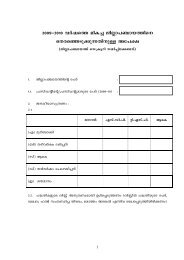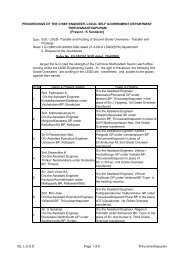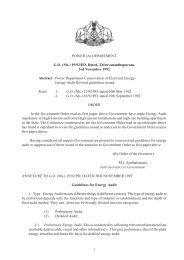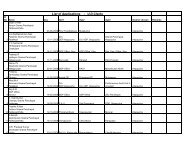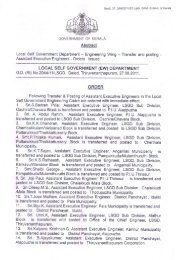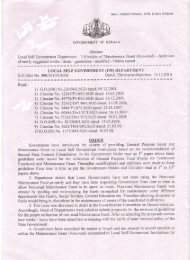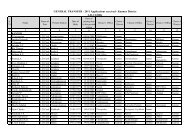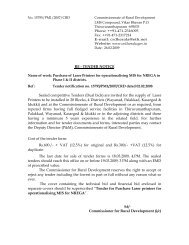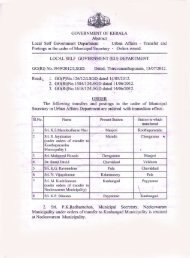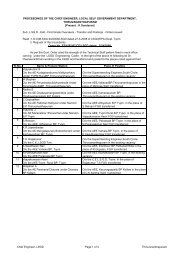Chapter 2 - Kerala Govt Logo
Chapter 2 - Kerala Govt Logo
Chapter 2 - Kerala Govt Logo
- No tags were found...
Create successful ePaper yourself
Turn your PDF publications into a flip-book with our unique Google optimized e-Paper software.
Environmental Assessment Report<strong>Kerala</strong> Local Government Strengthening ProjectPanchayati raj Act, most of these Minor Irrigation schemes are under local self Government.<strong>Kerala</strong> Irrigation and Water Conservation Act acknowledges the powers vested with the localGovernments as per Panchayat raj Act, 1994. However, local self Governments seem reluctantto plan major investments for revival of agriculture, resulting in paddy fields getting filled upor put to other uses. Technical expertise at the disposal of local Governments is also limited toplan large schemes for irrigation.Present day challenges in the water sector include prioritization of water usage, riparianrights, prevention of pollution, preservation and development of resources. So far, we wereconsidering rivers and water bodies as easily exploitable resources. <strong>Kerala</strong> Irrigation and WaterConservation Act has strong provisions against encroachment of water bodies, unauthorizeddrawal of water from water sources and pollution of water bodies. However, as per thePanchayat raj Act local Governments have control over these natural water sources.Integration of the activities of these institutions is essential to bring about desired changes inthe water sector of the State.Management of water resources should start at the micro watershed level. Managing a river isessentially management of the basin. Most of the river basins are destabilized and degraded.Restoration of the basins should be our priority rather than further exploitation. Attitudes andprocedures need thorough revision. <strong>Kerala</strong> Irrigation and Water Conservation Act envisageformation of basin organizations. How these organizations can be set up integrating thefunctions of Water Resources Department and Local Governments should be thought of. Amodel would be to have 44 River Organizations, 4 Basin Organizations and one apex body atState level. Representatives of all the Panchayats through which a river flows shall bemembers of the river organization. All the water bodies in the basin can come under the riverorganizations. Agriculture, fisheries, Animal husbandry, pollution control and industries can bepart of the river organizations. Availability of water, permission for usage of water to newapplicants, riparian rights etc shall be discussed and decisions taken at river organizations.Fresh water bodies, ponds, lakes etc shall come under the respective basins. Expertise inwater management available with Water Resources Department shall be thus integrated tomake it available for the local bodies. Problems associated with the life of rivers such asmaintaining minimum flow, prevention of unauthorized sand mining and such other issues canbe better addressed with the formation of the river organizations where the stake holders arewell represented through the Local governments.The National Hydrology Project has generated a huge database on water resources of <strong>Kerala</strong>.This can be effectively used to manage the water resources for each Panchayat in the State.<strong>Kerala</strong> is already into Participatory Irrigation Management (PIM) associated with majorirrigation projects. This can also be integrated at Panchayat level through the RiverOrganisations.2.3.2.8. The <strong>Kerala</strong> Bio-diversity Rules, 2008This has been formed consequent to the Biological Diversity Act, 2002 (Central Act 18 of 2003)which provide constitution of National Biodiversity Authority and establishment of stateBiodiversity Boards. The salient features of the rule are given below:72




